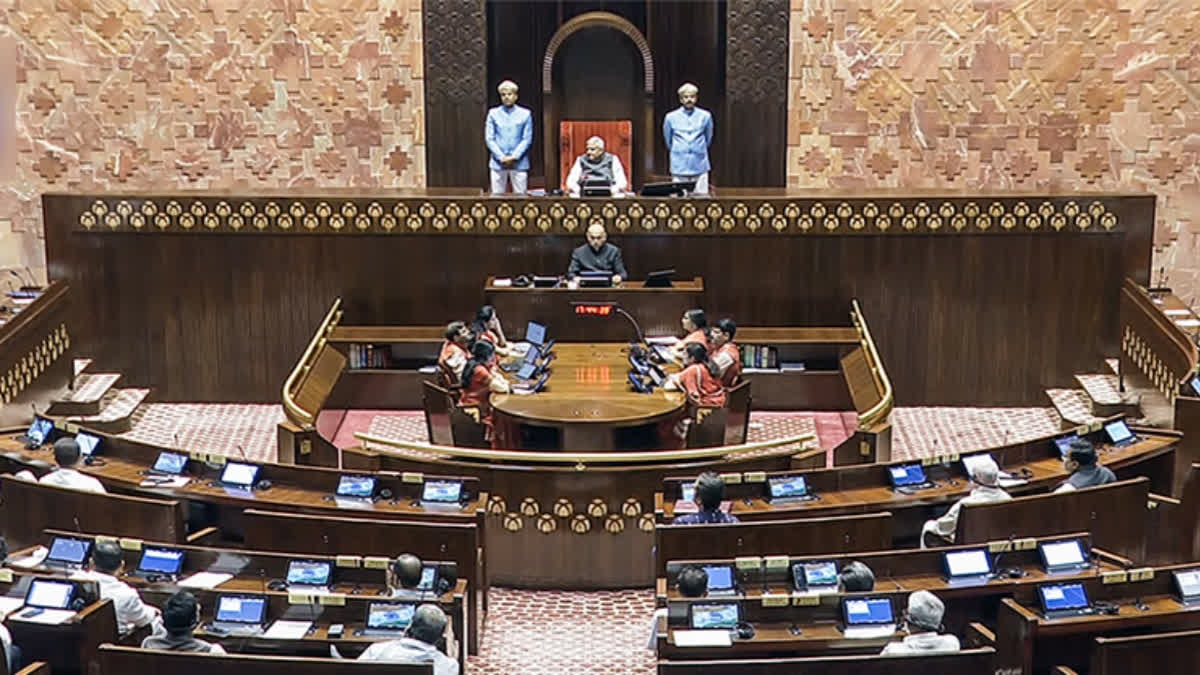
Through its Fiscal Health Index (FHI) 2025 NITI Aayog produces a fiscal stability rank of 18 major Indian states considering three factors related to GDP contributions and revenue creation and public expenditure levels. Among all states Odisha ranks first with Chhattisgarh behind it then comes Goa and Jharkhand whereas Gujarat takes the fifth position. The research discovers states' financial conditions by discussing the essential role effective fiscal resource management plays to establish a sound economy. The evaluation of tax buoyancy together with debt-to-GSDP ratio and expenditure efficiency and deficit control aims to provide best practice recommendations for sustainable fiscal governance to policymakers.
-
NITI Aayog developed the Fiscal Health Index (FHI) 2025 as an assessment tool for measuring the financial stability of 18 major states of India through their GDP contributions and tax revenues and public spending performance.
-
Odisha leads the rankings, followed by Chhattisgarh, Goa, Jharkhand, and Gujarat.
Objectives of the Fiscal Health Index
-
The system enables a standardized assessment of state fiscal conditions to be compared between one another.
-
The evaluation system detects favorable and unsatisfactory qualities of state-level fiscal control operations.
-
Transparency together with accountability champions the establishment of good fiscal policies.
-
The tool serves as a way to help policy advisors develop better fiscal systems that remain sustainable over time.
Key Indicators Evaluated
-
Tax Buoyancy tracks how tax income responds to economic expansion rates.
-
This area provides evaluation of state revenue collection through tax systems and independent non-tax streams of income.
-
States can determine their debt payment stability and ability to manage debt through the Debt-to-GSDP Ratio indicator.
-
The analysis of capital spending along with fiscal discipline makes up Expenditure Management.
-
The measurement of fiscal deficit as an indicator focuses on its percentage relation to GSDP.
-
Long-term institutional stability gets determined through the combination of revenue data with expenditure figures and deficit statistics together with debt performance indicators.
Key Findings
-
Overall debt performance and revenue collection excellence emerges from Odisha with 67.8 followed by Chhattisgarh with 55.2 and Goa with 53.6.
-
The states of Odisha along with Jharkhand and Goa together with Chhattisgarh demonstrate exceptional capabilities in non-tax revenue collection which amounts to an average of 21% of their total revenue base.
-
The states of Punjab and Andhra Pradesh together with West Bengal and Kerala struggle to manage their finances because their deficits run high and their debt sustainability is weak.
-
Capital Expenditure: High allocation (~27%) in Madhya Pradesh, Odisha, Goa, Karnataka, and Uttar Pradesh; Low allocation (~10%) in West Bengal, Andhra Pradesh, Punjab, and Rajasthan.
-
The debt situation in West Bengal and Punjab continues to worsen as both states accumulate increasing debt leading to financial instability in the long term.
Sustainability of Debt Portfolios
-
A test to determine if states can fulfill debt payments independently.
-
The debt portfolio of Odisha together with Chhattisgarh and Goa stands as sustainable.
-
Certain state economies show signs of financial distress because their debt-to-GSDP ratio continues to rise.
Conclusion
The Fiscal Health Index 2025 represents an essential instrument for state financial evaluation through which policymakers can trace policy needs. Financial sustainability requires permanent monitoring alongside strategic reforms that should include prudent fiscal management practices. States achieve long-term fiscal resilience through improved revenue generation and optimized expenditure as well as maintained debt control. The report now exists as a shared document between all States/UTs for promoting policy changes that use data to support continuing economic growth in India.



 Make in India and the Capital Goods Revolution
Make in India and the Capital Goods Revolution Bodh Gaya Temple Act (BTA), 1949: Historical and Legal Perspectives
Bodh Gaya Temple Act (BTA), 1949: Historical and Legal Perspectives Tribhuvan Sahkari University Bill, 2025: A Milestone in Strengthening India's Cooperative Sector
Tribhuvan Sahkari University Bill, 2025: A Milestone in Strengthening India's Cooperative Sector ‘Shishtachar’ Squads Launched in Delhi to Ensure Women’s Safety
‘Shishtachar’ Squads Launched in Delhi to Ensure Women’s Safety PM Pays Tributes to Shyamji Krishna Verma on His Death Anniversary
PM Pays Tributes to Shyamji Krishna Verma on His Death Anniversary PM Modi to Inaugurate Vande Bharat Train to Srinagar on April 19
PM Modi to Inaugurate Vande Bharat Train to Srinagar on April 19 Waqf (Amendment) Bill, 2024: Upcoming Parliamentary Debate and Legislative Process
Waqf (Amendment) Bill, 2024: Upcoming Parliamentary Debate and Legislative Process Free Speech as an Integral Part of a Healthy and Civilised Society
Free Speech as an Integral Part of a Healthy and Civilised Society Roshni Nadar Becomes First Indian Woman in World’s Top 10 Richest Women
Roshni Nadar Becomes First Indian Woman in World’s Top 10 Richest Women






